Features and scheme of planting currants in the fall
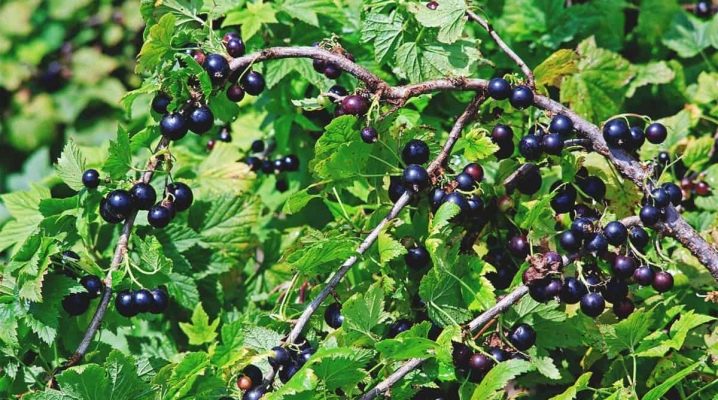
Autumn planting of currants is carried out in accordance with many factors. To obtain a bountiful harvest for the next year, everything should be taken into account - from the timing of the procedure to the choice of suitable neighbors.
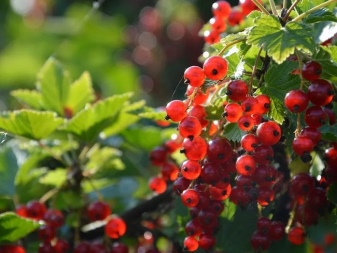
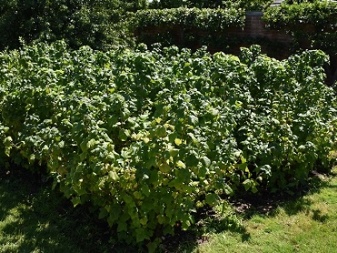
Timing
I must say that for regions that are characterized by rather cool autumn months and frosty winters, such as Siberia, the Urals, as well as for the middle zone, spring planting of currants is more recommended. This solution prevents seedlings from freezing during early frosts, temperature jumps or winter cold. For warm regions, such as the Krasnodar Territory, autumn planting is more suitable.
However, all this is rather a recommendation, and it is better to determine the exact time based on the specific weather situation. In any case, when deciding to send the bushes into open ground in the fall, you should first study the weather forecast and make sure that frosts will not come in the next few weeks. It is important to remember that it takes from 2 weeks to almost a month to root young seedlings, depending on the variety.
Planting crops in the southern regions is possible at the latest - that is, somewhere in the middle of October. A relatively late disembarkation is carried out in the Leningrad region - in the first weeks of the same month. In the Urals and Siberia, the owners of currant bushes begin to operate in the second half of August. For the middle zone, the Moscow region and the Volga region, agricultural procedures are characteristic from the second half of September to the first days of October. If you think over the landing dates depending on the lunar calendar, then you will have to immediately exclude the days of the full moon and new moon. The gardener must understand that currants planted too early will grow into growth and will not be able to properly prepare for wintering.
If you tighten up with planting, then the seedling will not have time to take root in its permanent habitat and will freeze out with the arrival of cold weather. During the period of the event, temperatures from 10 to 15 degrees should be observed during the day, and at least 5 degrees at night.
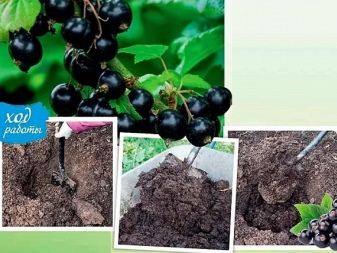
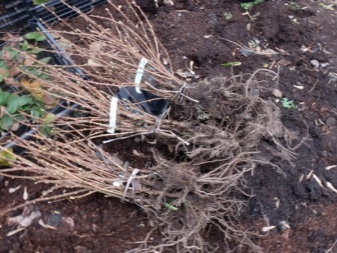
Selection and preparation of a seedling
The better and healthier the selected seedling is, the better it will take root, the faster it will get stronger and the more abundant it will bear fruit. When selecting planting material, it is necessary to monitor the presence of healthy roots, among which from 3 to 5 are lignified skeletal. The length of the latter should be about 20 centimeters. It is no less important that the seedling has a couple of aboveground shoots with a size that does not go beyond the boundaries of 30-40 centimeters. Of course, the seedling should be free of any signs of infection, mechanical damage and pest activity, but several live buds should be observed.
The selection of a variety should also be carried out in accordance with the climatic conditions of the region. Experts advise taking seedlings with a closed root system - that is, the roots of which are hidden in the ground, and the earthen lump itself is located inside a container of the appropriate size. Planting material can be obtained from the mother bush or purchased at a specialized institution. Some gardeners prefer to obtain seedlings from grafted berry bushes.
Before immersion in the hole, the roots of the bushes spend some time in a clay solution of a creamy consistency. In addition, immediately before being sent to the landing hole, they are immersed in a drug that stimulates the development of roots for a couple of minutes. Too long shoots of the underground plant system should be shortened to 20 centimeters, and dry places should be cut down to living tissue.

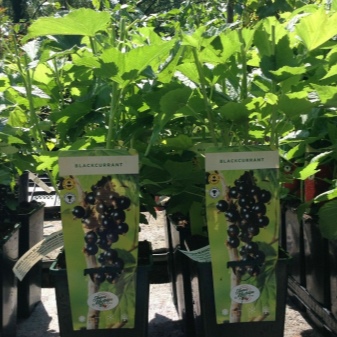
Where is the best place to plant?
In many ways, the further development of culture is influenced by the arrangement of a comfortable environment.
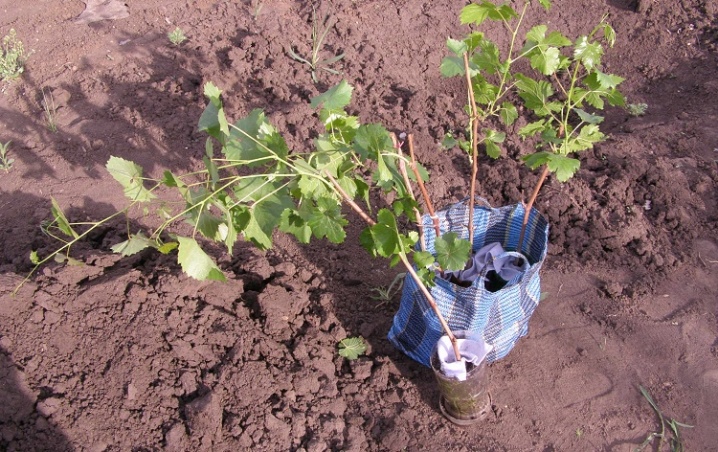
Priming
The area chosen for currants should be well lit, but, for example, black currants still require light partial shade. The beds should not be exposed to strong drafts, therefore, mainly on the north side, you should definitely erect a reliable barrier: fence, plant a tree or install a decorative structure. Excessively humid areas, as well as areas where precipitation is actively accumulating after melting snow or prolonged rains, is not suitable for the culture.
Lands with a close occurrence of groundwater are considered not too suitable. The soil mixture used for berries should be rich in nutrients, light and loose. The ability to pass moisture and air is extremely important. For black currant varieties, slightly acidic soils are more suitable, in which the pH level does not go beyond 5.1-6.5, and for red and white - soils with neutral acidity from 6.5 to 7.0 units. Bushes thrive on light loam or black soil, but develop very poorly on heavy or overly light sandy soils.
When planting black and golden berries, it is important to take into account that the acidic earth must necessarily be limed with dolomite flour. White and red currants also do not tolerate acidic soils and feel best in slightly alkaline beds.

Neighborhood of cultures
Shrubs capable of strong growth are considered bad neighbors for currants: raspberries or blackberries, as well as horseradish and Jerusalem artichoke, which have similar characteristics. You should not place a berry crop near fruit trees, which will take all the nutrients and moisture for themselves, while creating an unnecessary shade.
Currants will feel very bad near the gooseberries, since these crops have similar pests and diseases, and therefore will actively "share" them. It is undesirable to plant in such a way that red currants are adjacent to black ones. Home hops, onions with garlic, plums and honeysuckle are considered optimal neighbors for currants.
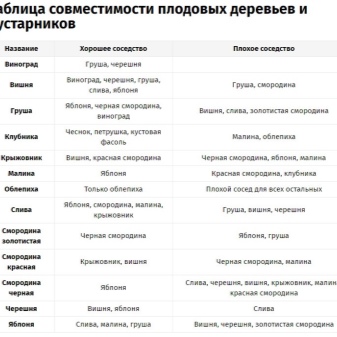
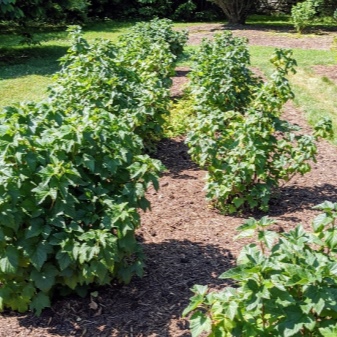
How to prepare a pit?
A planting hole for a currant bush in the country is ideally dug out a month and a half before the main event, although if this is impossible, this interval is allowed to be reduced to 2-3 weeks. Its optimal depth should be between 40 and 50 centimeters, and its width should be up to 60 centimeters. The minimum dimensions of the recess are 40 by 40 centimeters. For convenience, you can focus on the size of the root system of the seedling - the space of the hole needs to be made 2 times larger. According to the rules, the fertile top layer is immediately deposited in a separate pile. The earth from it will need to be laid out on the bottom of the pit, in a layer 15 centimeters thick.
At the next stage, fertilizers will need to be applied to the hole: 40 grams of superphosphate, 250 grams of wood ash and 5 kilograms of humus. The contents of the depression are thoroughly mixed and then covered with a small layer of ordinary garden soil. Upon completion, the pit is filled with a bucket of water.
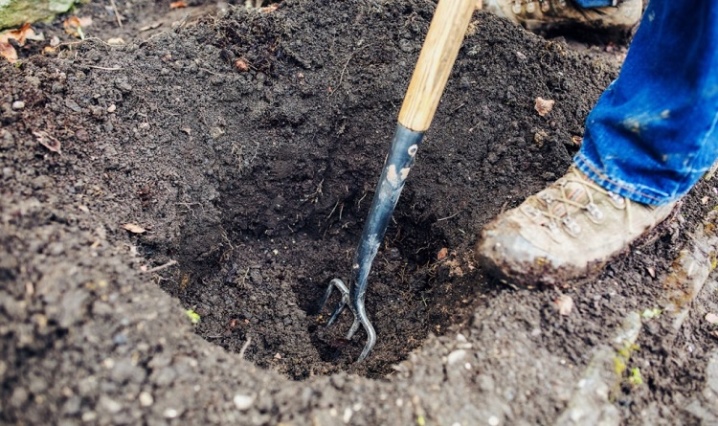
Technology
It is important for beginner gardeners to remember that the distance between the planted currant bushes should be about one and a half meters, and between the rows it will be necessary to maintain a gap of 2-2.5 meters. If the required intervals are not maintained, then the yield of the crop will decrease significantly over time. To properly plant a young bush of berries in a new place, you should start by forming a small hill from a mixture of fertilizers and fertile soil.It should be positioned strictly in the center of the landing hole, maintaining a height equal to 20 centimeters. The mound is immediately watered, after which it is necessary to wait until the liquid is completely absorbed.
The seedling should be planted at an angle of 45 degrees in relation to the surface of the garden. In this case, the roots of the seedling are directed strictly downward. The pit is gradually filled with earth, and after each stage it must be slammed with hands. After planting in open ground, the root collar of the bush should be only 5 centimeters below ground level. After half of the pit is filled, it will need to be soaked with 5 liters of water, and upon completion - another 20-25 liters of liquid.
When all the moisture has been absorbed, the earth is mulched with humus or freshly cut grass. It is customary to set the thickness of the protective layer equal to 3-5 centimeters. Further, each branch of a currant bush with a sharp tool is trimmed by two-thirds, leaving at least one bud.
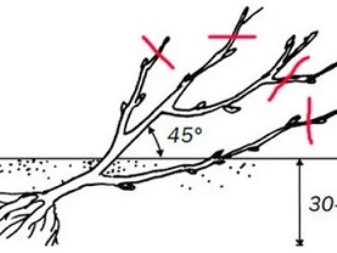
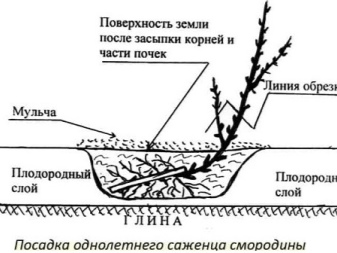
It is useful to remember that black or golden currants require a deepening of 10 centimeters, and for white and red currants 6-8 centimeters will be sufficient.
It should be mentioned that, in addition to the classical method of planting currants, when there is one bush per hole, there is also a fan method and vertical planting under a trellis. The fan-shaped method requires preliminary digging of a trench 40 cm wide. The length of the deepening is calculated depending on the number of specimens resettled into the open ground and the area of the entire site. The bushes are installed with the maintenance of a meter gap, and their shoots are fixed with a fan on a low trellis.
With a vertical planting, the depth of the dug trench reaches 20 centimeters, and the width does not exceed 15 centimeters. The deepening is filled with fertilizers, and the remaining free areas are covered with earth. The bed is immediately tightened with dark agrofibre or a dense film, in which several cross-shaped cuts are created. The width of each of them is equal to 30 centimeters. It is through these holes that seedlings are planted with a depression of 7 centimeters. The developing branches of the bush are fixed over time on the trellis.
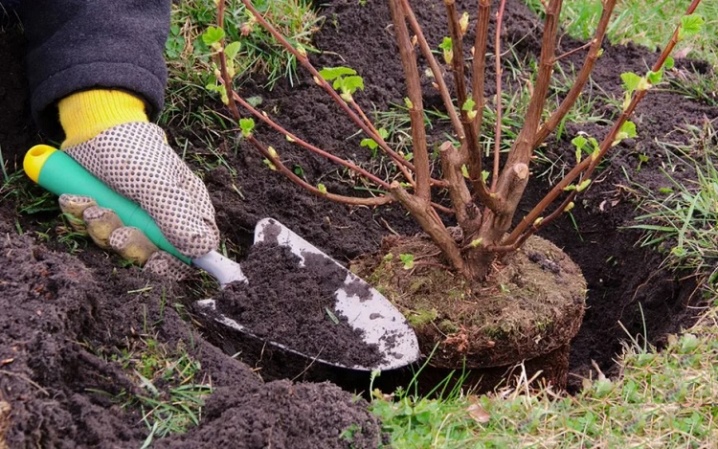
Follow-up care
Watering after planting should be regular, especially if the weather is dry. For irrigation, only water heated naturally in the sun can be used. In a freshly planted seedling, the mulching layer is updated in a timely manner, and the holes themselves are sprinkled with sand, which prevents the appearance of an earthen crust after watering. Before the onset of frost, planting is required to spud 15 centimeters - this layer will be removed only at the beginning of spring.
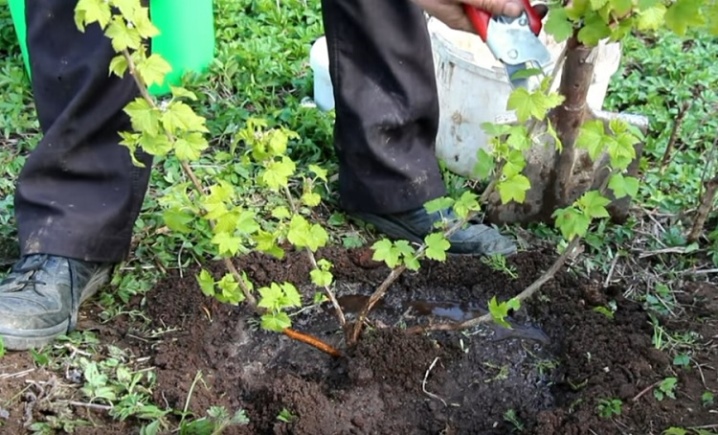
Common mistakes
The most common mistakes made during autumn planting are too early or too late for the procedure. Problems may arise due to poor-quality planting material or non-observance of the intervals between individual specimens.
An extremely important condition for the development of culture is pruning, carried out immediately after planting, and it is precisely its absence that can slow down the development of currants.
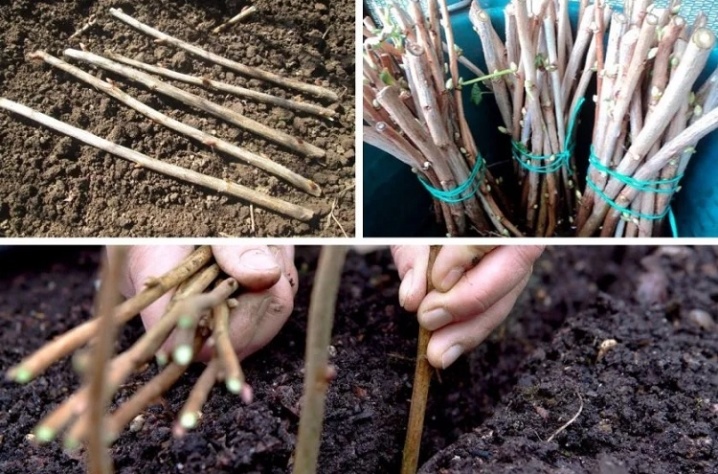













The comment was sent successfully.